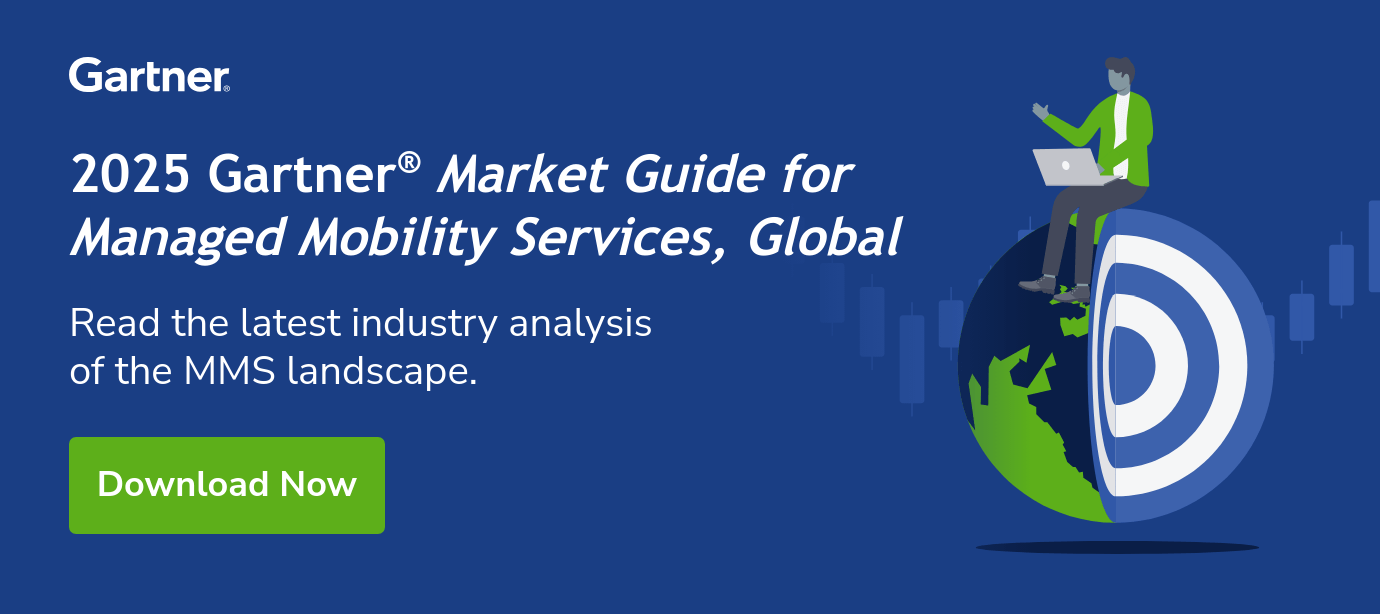Changing working practices and the perpetual sprawl of mobile devices are behind the ongoing rise of managed mobility services (MMS).
These two factors also mean that managing mobility is now very much a full-time job – something enterprises increasingly lack the resources or budget to manage in-house. But, whether you’re considering outsourcing MMS, handling it in-house or just wondering what all the fuss is about, here are the seven most important elements in managed mobility.
1. Continual Cost Savings
The most recent US census data revealed that if those who are able to work from home did so just half the time, the national savings would be over $700 billion a year.
What's more, by having mobility managed outside of the enterprise, teams don’t have to worry about the procurement, deployment or management of devices, so they're freed up to work on core business activities.
Auditing is central to cost savings and should be performed on an ongoing rather than intermittent basis. The issue with a sporadic approach is that systemic problems are not taken care of, nor the reasons the mistakes happened in the first place. Therefore, auditing should take place as invoices are acquired.
It should also focus on feature-level detail – where a substantial proportion of errors can be discovered – as the biggest savings are often obtained by isolating small but recurring overcharges.
With full-service auditing, huge savings can be unlocked. For example, one study split savings into various categories. It showed that in the "audit and recover for billing overcharges" category alone, expenses can be cut by 15%.
Ultimately, an MMS provider uses its industry expertise to create cost savings in a variety of ways, such as the optimization of mobile plans, effective pool management, and the avoidance of overcharges and roaming costs.
2. Robust Security Measures
Mobile devices are one of a company’s most vulnerable resources, so an MMS vendor should treat security with the utmost respect. At a minimum, vendors should take the following precautions:
- Containerization: Separating personal and work content to safeguard corporate apps and data.
- Encryption: Scrambling data sent to and from or stored on the device itself.
- Authentication: Implementing protocols for strong passwords and two-factor verification.
- Virus protection and remote management: Distributing a mobile security app, monitoring threats, performing remote scans, and, if necessary: remote locks and data wipes.
3. Effective Policies
Policies are the engine that drive a successful managed mobility program, helping to steer in the right direction eight key areas: eligibility, reimbursement, acceptable use, security, legal issues, change and support, program administration, and expense management.
4. Thorough Support Services
In our constantly-connected world, the costs of any downtime can be severe. To keep users up and running, wherever they are in the world, MMS providers should be manned with a dedicated team of named staff who get to know your team – not a generic call center.
An MMS vendor should provide service level agreements (SLAs) to support any claims they may make about help desk response time and availability. And agreed penalties should be triggered if any SLAs are broken.
5. Long-Term Partnership
Vendor churn is a substantial issue within the MMS industry, as many providers are owned by short-term investors. The problem for the customer is that a change of vendor often results in service interruptions and the customer also has to suffer the costs of re-implementing the service.
So, when choosing an MMS vendor, it’s crucial you research and assess the provider’s stability to increase the chances of having a provider for the long-haul.
6. End-to-End Approach
Risk and spend can be reduced most effectively when an end-to-end service is deployed. For example, auditing is inherently more successful when the MMS vendor has also managed the procurement of devices and services.
With this approach, the provider can then build and maintain a telecom inventory, and auditing is performed against a precise picture of the enterprise’s assets.
7. Clearly Agreed Program Scope
Broadly speaking, managed mobility can be divided into three areas: procurement, deployment, and management. Before signing up with a vendor, you need to agree and clearly specify how much of each area you want to handle and how much the MMS vendor should do.
Managed mobility programs should encompass the full span of devices your staff are using. A frequent mistake made by enterprises is to develop a thorough program for corporate devices but overlook setting up any policies for BYOD items.
And mobility activities shouldn’t solely be the preserve of IT – instead, all functions of an enterprise should be involved in policy decisions, as mobility has company-wide impact.
Finally, a managed mobility program should cater for all regions – some areas will have particular requirements concerning data privacy, for example. So, ensuring your provider has a truly global reach, with regional teams, can be highly beneficial.
Conclusion
As the continued incursion of trends such as Bring Your Own Device (BYOD) and remote working intensify employee appetites for flexible working practices, implementing a robust managed mobility strategy has never been more critical.
Here, we have addressed the seven most important elements that should be considered before choosing to implement a mobility solution. But for further guidance, including an unbiased assessment of seven key managed mobility service providers, download Gartner's guide to the MMS competitive landscape for free.
Topics: managed mobility


